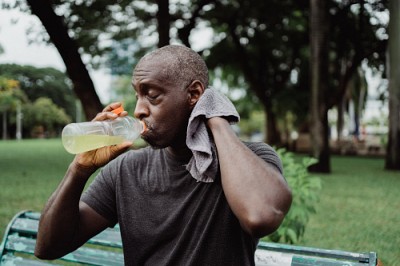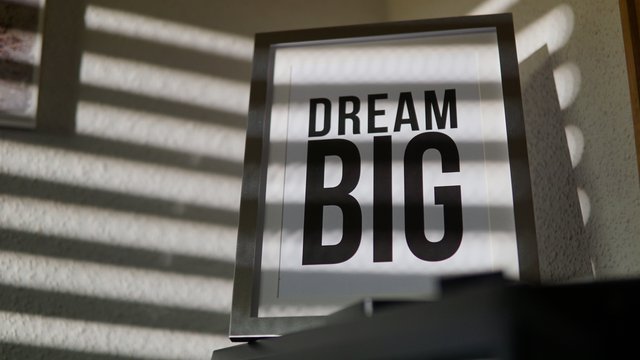The Reason Why you Sweat When Presenting
Performing presentations are experiences that we need to have during our whole life, from primary school to work-life. We will have different subjects we need to study by ourselves or in a group, and sometimes anxiety can be uncontrollable.
In this article, we will let you know some of the reasons why people sweat when the heat doesn’t seem to be the reason while delivering a presentation and tips on how we can avoid it.
What is Sweat? Why do People sweat?
Sweat is a physiological, natural, and essential process to control body temperature, allowing the body to cool; the amount of sweat produced varies from person to person. The genetic factors are the main ones responsible for the amount of sweat.
However, other factors also contribute to the production of sweat: the practice of physical activity, high temperatures, stress/anxiety, and hormonal changes such as puberty, pregnancy, or menopause, among others.
Alcohol, nicotine, and coffee, and spicy foods may also affect sweat production; aside from that, one of the biggest reasons that cause a person to sweat during a presentation is the nervousness or fear of speaking in front of an audience.
According to a study by researchers Karen Dwyer and Marlin M. Davidson, from the University of Nebraska-Omaha, published in 2012, fear of public speaking is surpassed only by fear of death. It is ahead of the fear of financial problems, height, and loneliness.
That is to say, if you’re terrified of exposure, know you’re not alone.
3 Reasons why you sweat When Presenting
Lack of Emotional Intelligence
If we are facing an audience and we need to give a speech because we do not know how to recognize the level of stress due to anxiety, fear of not talking the subject safely that we will present, we can sweat;
When we lack emotional intelligence it is hard to recognize and control our emotions; we can go so sure and confident that we got it, and when we get there, our body can tell us otherwise.
Food that boosts our temperature
We can sweat during the presentation if we have eaten a spicy food like pepper and even if it is part of our day-to-day we have associated the extraordinary factor which may be the fact that he is giving a lecture;
Some food we eat can naturally boost the temperature in our body, such as ginger, coconut oil, brown rice, green tea, cayenne pepper, garlic, and oatmeal. Avoid unwanted sweat during the presentation; just in case, don’t eat any of them on the display week.
Hormonal Impulse
We can still sweat during a presentation because of natural hormonal phenomena like, for example, pregnancy, menstruation, or some exception. This happens because the body is trying to find balance by liberating in the form of liquid the excessive level of blood flow and high hormones produced during this time.
So if you are delivering a presentation and pregnant or menstruating, avoid using silk clothes that can easily absorb sweat and make it visible to all of the audience; if not, always carry some water with you since it is a natural cooler.
The ideal temperature for the proper functioning of the human body is 37ºC, so if anything causes warming in our body, our nervous system understands that we are in a dangerous situation. One of the reactions of the organism is sweat, water secretion mechanism, and you get out.
As the water evaporates using the heat produced by our body, there is natural cooling.
How to Minimize sweating levels during a Presentation
- Worry about what you wear; prefer airy/light clothing and natural fibers, such as cotton. Avoid synthetic fibers that are less porous and do not let the skin breathe;
- Pay attention to food: avoid foods rich in fat and spicy, caffeine, and alcohol. For better choose foods such as vegetables, fruits, and vegetables;
- Try to reduce stress and anxiety; as far as possible, to do so, practice activities such as yoga and meditation;
- Keep hydrated; since the body loses water through sweat, it is essential to maintain adequate hydration, even if you do not have headquarters.
It is also necessary to develop some strategies and techniques to control insecurity and nervousness as reasons to sweat during the presentation and concentrate our attention on content and the best way to attract and engage the public.
How to prepare for a presentation in 4 Steps
Step 1. Meet your audience
Knowing in advance the group to whom you will talk gives an idea about their expectations and reactions. One way to do this is to look for people representing your target audience and question them on what they expect from a presentation like the one you will drive.
It is also vital to anticipate answers to some questions that may come from the audience at the time of the event; before entering the room or the auditorium, make a brief survey.
Step 2. Study the subject
Study well the subject you will address. Talking about something you are not sure about will increase your nervousness and cause you to sweat, and the whole audience notices it.
But remember that possibly you will not exhaust the whole subject. So select the more pertinent points to address and separate others to deal with the time left.
Step 3. Organize the presentation
Structure the presentation so that it always indicates the topics that follow.
Kelli Stonework suggests that we need to elaborate a set of key phrases and, if it is a presentation slide show, use them during transitions.
The idea is to plan and develop the presentation to hold the public’s attention, drive it through the subject and get it into action at the right time.
Step 5. Practice a few times
The exercise builds confidence and helps make the presentation more natural, so rehearse the display as often as necessary. Study the organization, memorize the order in that the topics will be addressed, and the presentation will be severe about conferring points such as the way you speak, the adopted tone of voice, and the speed of speech.
Then make the necessary adjustments.
Conclusion
The nervous system is responsible for regulating body temperature, acting with involuntary actions when something changes in our body; during presentation week, we rarely have time to analyze the food we eat and often focus on how we will deliver and which information is valuable to share.
Now that we know that anxiety and food, hormones, and lack of emotional intelligence get between our professional careers, we should be ready and learn more about it.
Reference and Further Reading
Ace The Presentation. Amadebai, E. 11 Best Body Language Tips for Engaging Presentations.
Stress sweating? How to stop nervous sweating during a presentation








